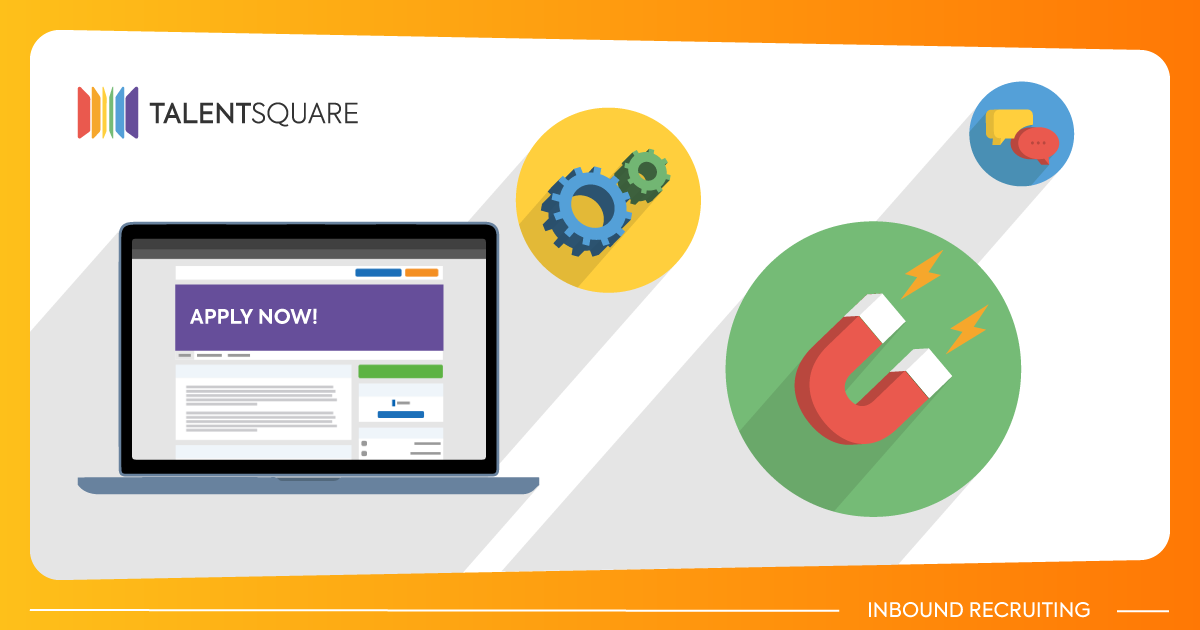
Talent competition, ATS and inbound recruiting.
It’s no secret to recruiters and HR executives that the recruiting landscape has changed over the past couple of years. On one hand, we have seen a lot of specialized jobs popping up, compelling companies to find more and more targeted profiles. On the other hand, top talents are facing plenty of opportunities and have the luxury of choosing their employer. As a result a new kind of competition between companies emerged, a competition for talents.
In the LinkedIn Global Recruiting Trends 2017 report, 57% of recruitment executives admit that talent competition is now their biggest challenge. However, they keep spending more than 50% of recruiting budgets in advertising, job boards and recruitment agency costs¹. But is it really wise to pay an agency to recruit a specific profile when you know that 41% of candidates don’t see themselves staying at your company for more than 2 years¹?
To face this challenge, companies must now invest more in their digital tools and rethink their recruitment strategy. In such a competitive market they should invest in communication and act towards talents like they would do for their customers, promoting themselves as employers like they promote their products and services. It’s called inbound recruiting, or how to apply digital marketing techniques to recruitment.
How does inbound recruiting work?
Inbound recruiting is a strategy mainly based on employer branding, content creation and digital marketing. It is a process in 5 steps which covers the whole ‘talent lifecycle’ and tend to optimize every touchpoint talents have with the company.
The very first step, which could be considered as a prerequisite to start building a good strategy, is to use the right tools to automate and manage the recruitment process efficiently, possibly an end-to-end solution covering everything from the career page and job description management to talent relationship management and reporting. This way you can have a global view and monitor the whole recruiting funnel.
Then you use employer brand content to attract talents to your HR digital ecosystem (career pages, social employer pages, job descriptions, etc.). Once visitors arrive in your ecosystem, you make sure you provide the right information to convince them that you are the right employer. In other words, you try to convert your visitors into candidates. As soon as they apply, you make everything possible to hire your candidates quickly and efficiently by easing the processes and providing a state-of-the-art candidate experience. Finally, you engage your employees to motivate them and turn them into promoters.

From a practical point of view, this means – amongst other things – understanding what top talents want and need, working on employer branding to clearly state the company’s values, creating and broadcasting targeted content to drive the right traffic to a specific job description or career page, writing transparent and easy-reading job descriptions, working on usability to create a seamless application process or improving candidate experience.
As a recruiter what can I do?
Your Marketing department most probably won’t have the bandwidth to set up a whole new content strategy together with you. But there is a lot you can start doing yourself as a recruiter, with your knowledge of the market, information and data available online and the tools you have at your disposal like your application tracking system. And of course do not hesitate to ask experts to assist you and help you build your own strategy or optimize your recruitment funnel.
First you need to have a deep understanding of candidates you want to hire and of your recruitment process and funnel. You need to know what talents expect from you as an employer, which information they are looking for or what triggers the application process.
You should also go through the whole recruitment process yourself to see whether or not your HR environment is engaging and inspiring and if it is easy enough to apply. This way you will be able to spot potential weak points in the process and adapt it accordingly by enriching your career pages, reworking your job descriptions or improving usability for instance.
Combining your ATS with inbound recruiting is a virtuous circle. Once you have worked on your recruitment funnel, you can analyze your data (number of open positions, visits and applications per position, conversion rate, time to hire, etc.) to see the results of the actions you have done so far, fine-tune your strategy or spot some other issues you may have missed.
If you are a Talentsquare customer, you probably noticed that we have done a lot to make your career page and job descriptions clear and candidate friendly. In addition, we have recently reworked our dashboards so that you can see all data related to an open position at a glance and have a better understanding of what is going on for every open position you have.
And since we want you to get the most out of our ATS, we partnered with inbound recruiting experts to offer you additional services to help you attract, convert and hire more talents. Contact us for more information!
¹ In the LinkedIn Global Recruiting Trends 2017
Author : Audrey Perez from People Agent.
